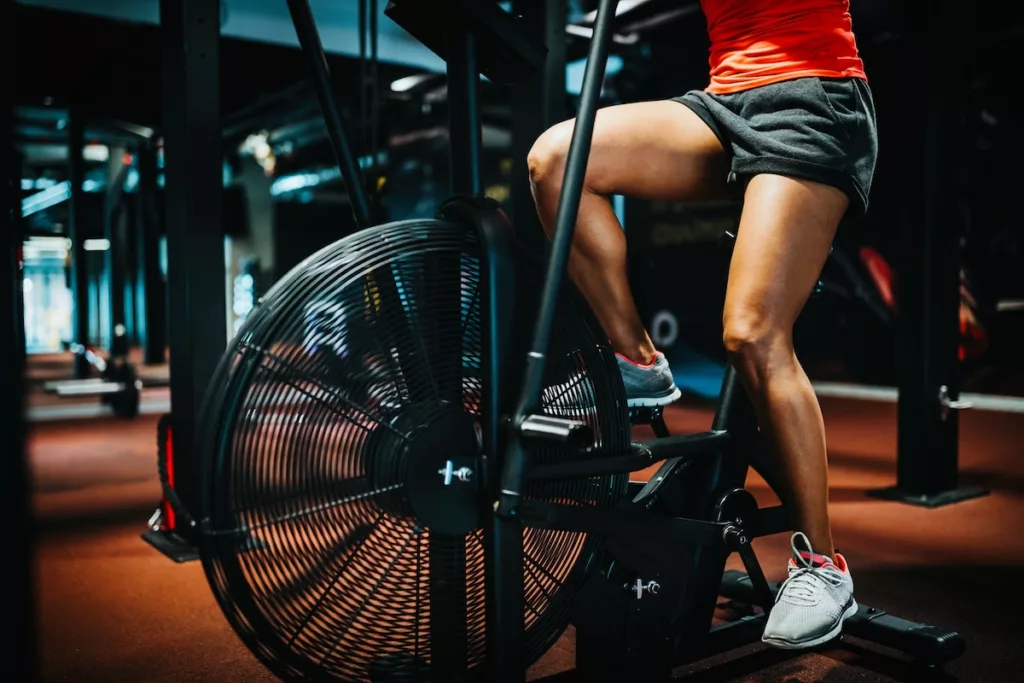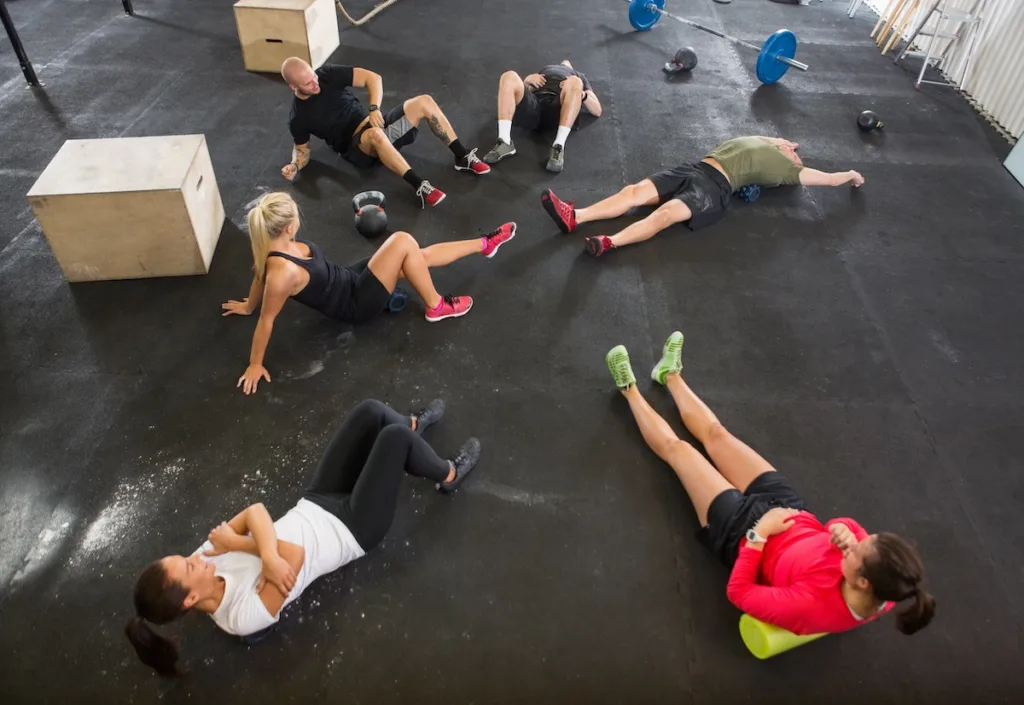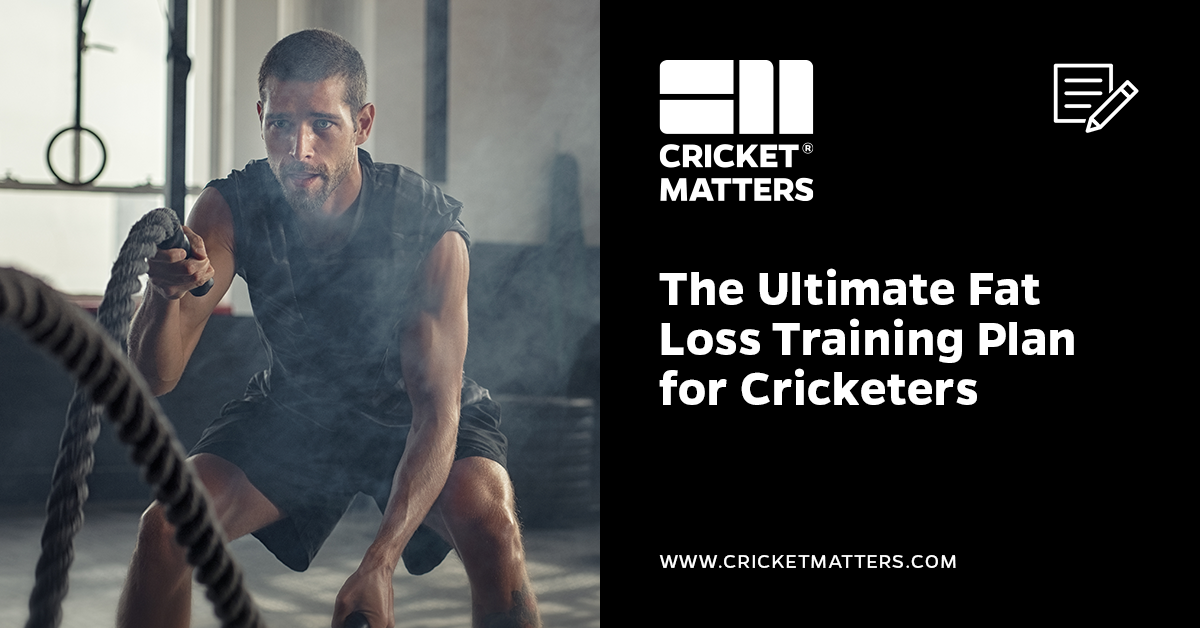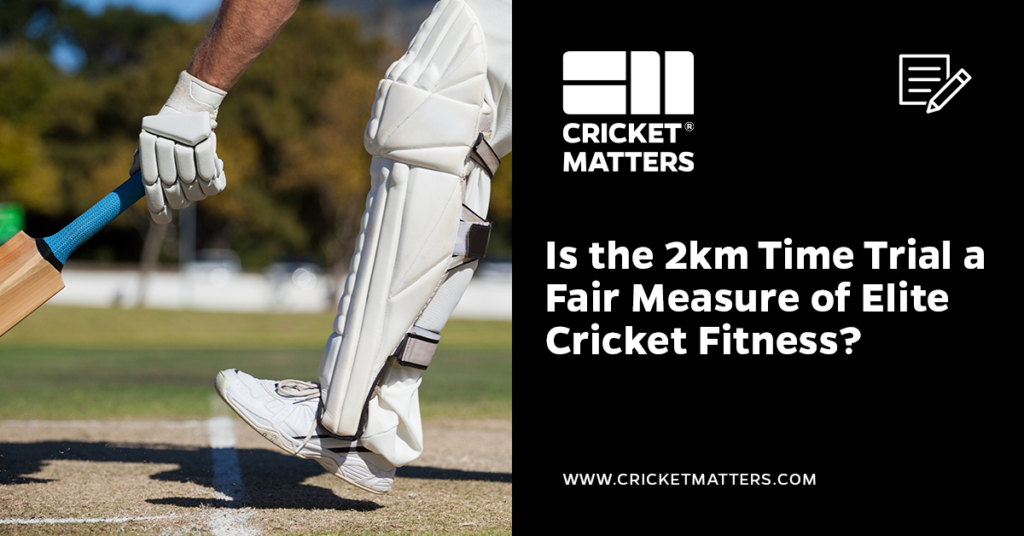
I hope you enjoy reading this blog post.
James Breese, Cricket Matters FounderIf you need my help with cricket coaching, strength and conditioning, injury rehab, or nutrition, click here.
This blog shares our personal experience in creating fat loss training plans for cricketers.
We’ll explain how targeted strength and conditioning strategies for fat loss can lead to improved body composition, greater agility, and superior performance on the cricket field.
This will, in theory, make you faster, more resilient to injury and increase your longevity in the game.
Table of Contents
If you’re a cricketer looking to become more athletic and lose weight and some extra body fat, then you’ve come to the right place.
Our ultimate fat loss training plan for cricketers is specifically designed to help write your own fat loss training plans so you can achieve your fitness goals for cricket and take your athleticism to the next level.
We’ll share a range of expert strategies, designed to help you lose weight, lost body fat, build strength, and increase agility.
Whether you’re a seasoned player or just starting out, this fat loss training plan is packed with everything you need to succeed.
Introduction
Fat loss is hard. There are no quick fixes, no magic pills, no miracle cures. Just wishing you were 30 pounds lighter will not make it so.
It will take a conscious effort, an enormous amount of patience, and a lot of hard work. You will want to give up. You will feel hungry.
You will have periods of low energy and motivation, and you will likely suffer from mood swings throughout the process.
So why even try? Vanity is one reason. I mean, who doesn’t want to look better naked?
Athletic performance on the cricket field is another.
Replacing fat with muscle mass almost always improves work capacity. And for some of us, our lives actually depend on it.
Fat loss lowers our risk for all the metabolic diseases out there and increases our odds of living longer, in theory.
What I want to focus on here is fat loss for cricketing performance and how to maximize your training efforts for faster results.
From personal experience, training for fat loss is 20 percent physical and 80 percent good nutritional habits.
You may sweat more during your workouts, but most of your success will derive from what you put in your mouth.
That’s the real battle.
So why is a lower body fat percentage advantageous for cricketing performance?
How Body Fat Affects Cricketing Performance

In 2002, Dr. Todd Miller, a strength coach at Penn State University, published a study that analyzed a year’s worth of data from multiple sports teams, ranging from men’s American football to women’s soccer.
Dr. Miller found that overall athletic performance tended to decrease throughout the season as players focused less on general training and more on sport-specific preparation for competitions.
Out of all the sports, Dr. Miller noticed that one team in particular, women’s soccer, experienced significantly decreased performance during the season relative to other teams.
While the average weight of the female soccer players stayed roughly the same from pre-to post-season (136 pounds and 134 pounds, respectively), their body fat increased three percent over the course of the season, which translated into roughly six pounds of muscle loss and four pounds of fat gain.
At the time, research wasn’t available about how body composition affects athletic performance, but Dr. Miller found some interesting data in the world of horse racing.
Horse trainers found that the average 1,300 pounds horse’s speed slowed down significantly with just an extra two to five pounds of weight.
After learning this information about racehorses, Dr. Miller hypothesized that a human athlete gaining a few pounds of fat would have significant performance implications.
He put his reasoning to the test by loading 170 pounds athletes with 3.4 pounds (a two percent increase in body weight) and having them complete power related tests, which he published in another research paper.
He found that, for a 170lb athlete, a two percent increase in body weight resulted in a vertical jump height loss of two inches and a 40 yard dash time increase of 0.26 seconds.
If you are not familiar with the 40 yard dash, 0.26 seconds is an eternity.
This is the sprint test all US National Football League (NFL) players must do at the NFL Combine, a week-long event that tests the athletic abilities of college players seeking to enter the league.
A 0.1 second difference can mean millions of dollars.
The conclusion of Dr. Miller’s studies and similar subsequent ones is resounding:
You need to lose fat without losing muscle to boost athletic performance.
Let’s put this in terms of cricketers – us club cricketers who love to play the sport and perform at our best on Saturday league cricket?
Using men who average body fat percentages in the mid-twenties, that equates to about 10 to 20 pounds of fat to lose.
The level of body fat they carry is the equivalent of a 10 to 20 pound dumbbell.
This dumbbell not only has a massive impact on cricketing performance, but it also affects their joints and overall health.
I argue time and time again that losing excess fat is far more beneficial for performance than logging extra miles on the pavement or hours in the gym.
In my opinion, fat loss starts in the kitchen and what you put in your mouth – a conversation we’ll save for another time.
I want to share with you our strategy for training because, if fat loss is your goal, the way you train needs to change.
How Cricketers Can Train for Fat Loss

The information and advice I share below is from years of observation and conversations with some of the most prominent names in the weight loss industry.
If you want that ultimate functional body – the strong, muscular, functional, lean, healthy physique indicative of the best athletes we admire – then you need to be training frequently, training different qualities, and using multiple training tools.
Over the years, I’ve seen that athletes who engage in this multi-pronged training technique were leaner despite a high caloric intake.
One of the best examples of elite athletes who are lean and muscular despite a well- documented unhealthy diet in the media is Australian rules footballers.
On average, these players aren’t as genetically gifted as sprinters or soccer players, yet they’re extremely lean.
I’d argue it’s because they do a lot of work in the anaerobic lactic zone, both on the field and in the gym.
They also have to train using several completely different qualities – they need strength, power, speed, endurance, lactate tolerance, and agility. All this while consuming an unhealthy diet.
With this in mind, my ultimate fat loss training plan includes the following four components:
- Heavy Lifting
- Metabolic conditioning
- Aerobic work
- Anaerobic alactic energy system work
Heavy Lifting
Lifting for fat loss is a technique championed by many of the top coaches. When dieting for fat loss, you need to lift weights to preserve muscle mass.
In a calorie-restricted state, your body will try to drop muscle tissue to alleviate its daily energy needs.
Simply put, muscle uses a lot of calories to function and, when there’s a shortage of calories, the body needs a very good reason to keep it there.
Enter heavy lifting. Lifting heavy weights requires a lot of muscle tension and strength.
To keep up with the demand, your body will have no choice but to maintain (or sometimes even increase) its muscle mass.
Metabolic Conditioning
The objective of a metabolic conditioning, or lactate-inducing, session is to stimulate growth hormone release and burn calories for fuel via whole-body lactate production.
The more muscle groups that are involved in the process, the more effective the session will be. Coaches love metabolic conditioning because of how good of a job it does for burning fat.
My go-to method here is kettlebell complexes. What makes kettlebell complexes so great is that they work multiple muscle groups and energy systems at the same time.
Aerobic Work
People have such a love-hate relationship with aerobic work.
Studies have shown that aerobic exercise results in the most amount of fat loss when compared to resistance training.
This isn’t the full story though, and it is a much more complex topic that goes way beyond the scope of this article.
What you need to know is that when you combine aerobic exercise and resistance training, it always yields the greatest amounts of fat loss and the greatest improvements in body composition.
Anaerobic Alactic Energy System Work
Sprinting or short bouts of maximum intensity exercise lasting up to 20 seconds is extremely metabolically and neurologically draining – but is such an effective tool in the fight against fat.
Fast-twitch muscle fiber movements burn significantly more calories than slow-twitch movements and also help you burn calories long after your workout has concluded via a process known as excess post-oxygen consumption, or EPOC.
During very intense exercise like sprinting, your body uses more oxygen than it takes in. When your workout concludes, your body must re-oxygenate and recover from that stress.
This process burns calories, largely in the form of fat. Moreover, short, intense intervals also seem to burn visceral fat, a type of fat stored in your abdomen that is particularly dangerous to accumulate.
How to Combine Training Methods for Maximum Fat Loss

Now that you know what types of workouts you need to perform to achieve fat loss, how should you put them together most effectively?
In an ideal world, this would be off-season, you’d be training twice a day, seven days a week, sleeping eight plus per night with a mid-afternoon nap, and keeping a personal chef on hand to make sure you stay on track with your nutrition.
That scenario is very unlikely when you have a full-time job, family obligations, and daily life in general going on around you.
As cricketers, we need something more forgiving.
Here is a much more manageable four day option:
- Day 1: Heavy lifting + alactic work
- Day 2: Metabolic conditioning + 30 minutes of aerobic work
- Day 3: Off
- Day 4: Heavy lifting + alactic work
- Day 5: Off
- Day 6: Metabolic conditioning + 30 minutes of aerobic work
- Day 7: Off
There’s a golden rule I’d also like to share with you: Any alactic work should be completed at the end of a strength training session, never before.
Alactic work is much like strength work in that it’s all but impossible to efficiently train in a fatigued state.
Are You Ready for This Type of Training?
Most cricketers are not physically prepared for a fat loss program.
These types of training programs are hard – very hard. When cricketers jump straight into them with two feet blind, more often than not they end up injured within a few weeks, setting them even further back from their fat loss goals.
We must have this conversation now because you may be better off taking the time to prepare your body for the onslaught of this type of training, and in partiuclar, waiting for the off-season.
This isn’t something to do in-season or pre-season as it will leave you feeling stiff, sore and burnt out.
For a lot of cricketers we work with, sometimes it takes up to six months to prepare their bodies for fat loss goals.
Six whole months! And that’s even with seasoned professionals with decades of training under their belt!
One thing we ask cricketers looking to lose fat to do is to ask themselves, “Am I really ready to take on such a task?”
If you’re starting a fat loss program but don’t have the fundamentals of walk, water, and sleep (WWS) nailed down, you will not be able to maximize your results or improve long-term health.
After nailing WWS down, if you don’t have good mobility and flexibility as well as baseline levels of strength and aerobic capacity, your body will not be able to stand up to the true demands of training for fat loss.
And this is long before we even discuss nutrition.
Without the basics and fundamentals, you will likely end up injured and even further from your goals.
After all the years of work we’ve done helping cricketers lose weight, get stronger, and live better, the one lesson we learned is that it pays to take your time in the beginning. It’s better to be the tortoise than the hare in this race.
If you’re about to embark on your own fat loss journey, ask yourself: Are you really ready for this? Are you mobile enough? Are you strong enough? Do you have good cardiovascular capacity?
If you answer no to any of these questions, it may help you meet your goals faster if you avoid the above training plan at first.
Preparing your body for more intense training will put you on the path towards fat loss and strengthen your base so you avoid setbacks in the future.
If your answer is yes to all the above, then this type of training plan will absolutely help you maximize your fat loss results.
Final Thoughts: Fat Loss Training Plan for Cricketers

Body fat is an extremely important topic to discuss for cricketers – both in terms of health and athletic performance.
Small increases in body fat can lead to a profound decrease in athletic and cricketing performance.
Untracked changes in body composition can mislead someone into believing that their program is responsible for changes in performance.
If you want that ultimate, athletic cricketing body – that strong, muscular, functional, lean, healthy physique – then you need to be training frequently, training multiple qualities, and doing so consistently.
There’s no substitute for hard work.
And above all, don’t neglect your diet. You cannot out train a poor diet, and your body needs the best fuel you can provide.
Further Reading
FAQs
What is the Best Fat Loss Training Plan for Cricketers?
A balanced approach combining strength training, metabolic conditioning, aerobic work, and specific exercises targeting the anaerobic alactic system is effective. It’s also important to tailor the plan based on individual fitness levels and cricketing roles.
How Does Body Fat Affect Cricketing Performance?
Excessive body fat can hinder agility, speed, and stamina, which are crucial in cricket. It can also affect endurance and recovery, impacting overall performance in training and matches.
What Are the Key Components of Training for Fat Loss in Cricketers?
The key components include a mix of strength training, metabolic conditioning, aerobic exercises, and workouts focusing on the anaerobic alactic energy system. This combination helps in effectively burning fat while enhancing cricketing skills.
What is the Importance of Strength Training in a Cricketer’s Fat Loss Plan?
Strength training is vital as it builds muscle mass, which in turn increases metabolic rate, aiding in more efficient fat burning. It also improves overall strength and injury resistance, which are important for cricketers.
Can Playing Cricket Reduce Belly Fat?
Playing cricket can aid in overall fat loss, including belly fat, as part of a comprehensive fitness routine. However, targeted fat reduction in a specific area is challenging. Combining cricket with a balanced diet and overall fitness plan, including strength and cardio exercises, is more effective. Nutrition plays a crucial role, as a healthy, balanced diet can significantly enhance fat loss outcomes. It’s important to remember that consistent physical activity and proper nutrition go hand-in-hand for effective fat loss.


![[Case Study] Advanced Hiit Training Plan for Cricketers 4 Hiit Training for Cricketers](https://www.cricketmatters.com/wp-content/uploads/2024/04/HIIT_Training-1024x536.png)
